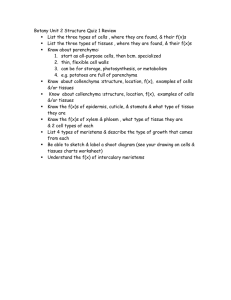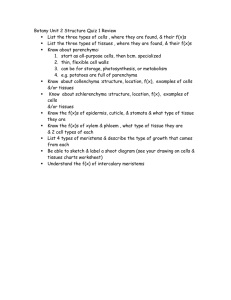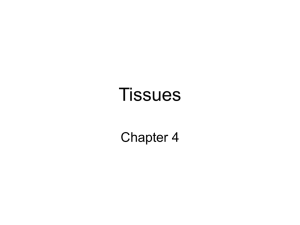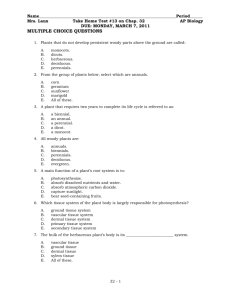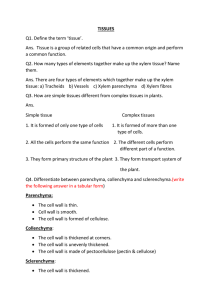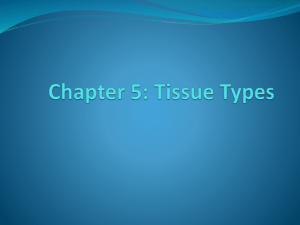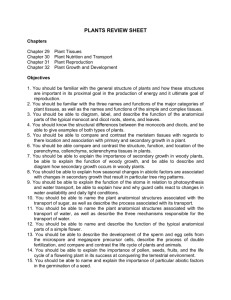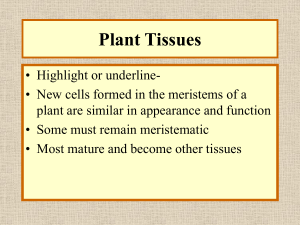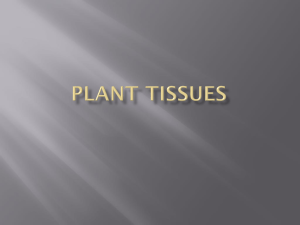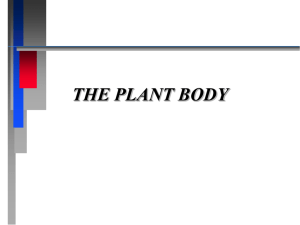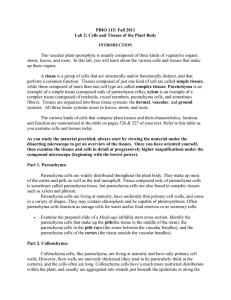Plant Tissues and the Multicellular Plant Body CHAPTER OUTLINE
advertisement
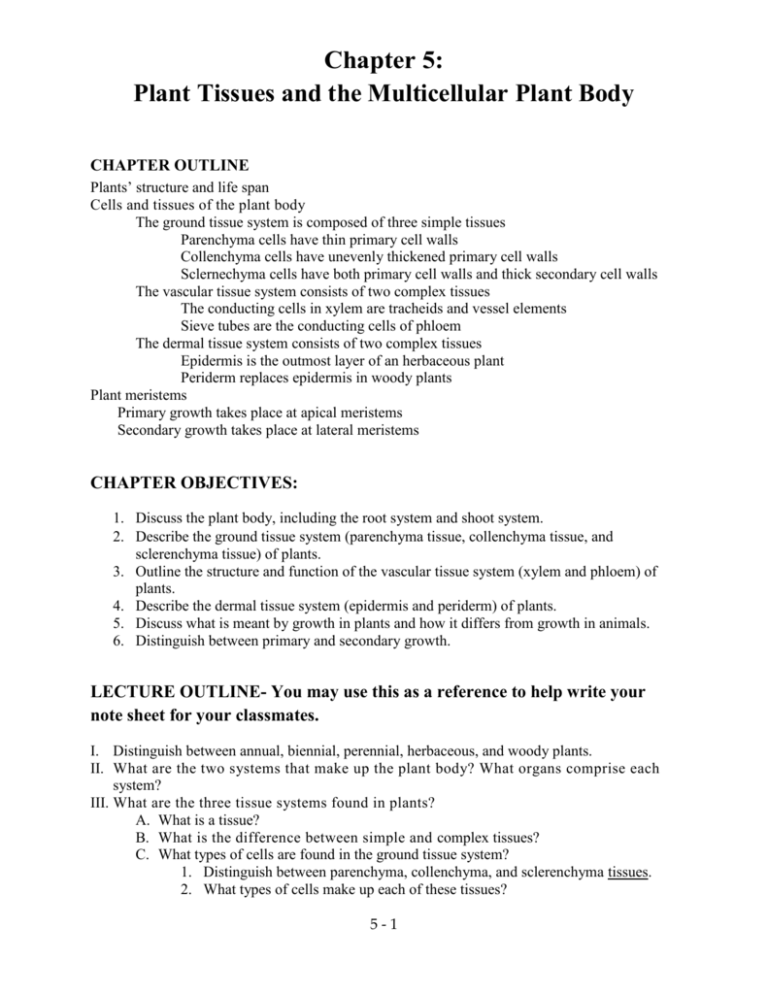
Chapter 5: Plant Tissues and the Multicellular Plant Body CHAPTER OUTLINE Plants’ structure and life span Cells and tissues of the plant body The ground tissue system is composed of three simple tissues Parenchyma cells have thin primary cell walls Collenchyma cells have unevenly thickened primary cell walls Sclernechyma cells have both primary cell walls and thick secondary cell walls The vascular tissue system consists of two complex tissues The conducting cells in xylem are tracheids and vessel elements Sieve tubes are the conducting cells of phloem The dermal tissue system consists of two complex tissues Epidermis is the outmost layer of an herbaceous plant Periderm replaces epidermis in woody plants Plant meristems Primary growth takes place at apical meristems Secondary growth takes place at lateral meristems CHAPTER OBJECTIVES: 1. Discuss the plant body, including the root system and shoot system. 2. Describe the ground tissue system (parenchyma tissue, collenchyma tissue, and sclerenchyma tissue) of plants. 3. Outline the structure and function of the vascular tissue system (xylem and phloem) of plants. 4. Describe the dermal tissue system (epidermis and periderm) of plants. 5. Discuss what is meant by growth in plants and how it differs from growth in animals. 6. Distinguish between primary and secondary growth. LECTURE OUTLINE- You may use this as a reference to help write your note sheet for your classmates. I. Distinguish between annual, biennial, perennial, herbaceous, and woody plants. II. What are the two systems that make up the plant body? What organs comprise each system? III. What are the three tissue systems found in plants? A. What is a tissue? B. What is the difference between simple and complex tissues? C. What types of cells are found in the ground tissue system? 1. Distinguish between parenchyma, collenchyma, and sclerenchyma tissues. 2. What types of cells make up each of these tissues? 5-1 3. Describe the features of parenchyma, collenchyma, and sclerenchyma cells. 4. What functions are performed by each of these types of cells? D. What two types of complex tissues make up the vascular tissue system? 1. What is the function of the xylem tissue? a. What kinds of cells are found in the xylem tissue? b. Which cell types are using for conduction? Describe their structure. c. Which are for conduction in flowering plants? d. Which are for conduction in gymnosperms and seedless vascular plants? e. What are the other cells used for? Describe their structure. f. Which xylem cells are dead at maturity? 2. What is the function of phloem tissue? a. What kinds of cells are found in phloem tissue of flowering plants? b. Which cell type is used for conduction? Describe its structure. c. Which two cell types work together as a functional pair and why is this necessary? d. What are the other cells used for? Describe their structure. e. Are any of the phloem cells dead at maturity? E. What two complex tissues make up the dermal tissue system? 1. What kinds of cells are found in the epidermis? a. What the functions of these cells? b. What is the overall function of epidermis? c. What is the cuticle and where is it located? d. What kinds of special outgrowths may be found in the epidermis? 2. What kinds of cells are found in the periderm? a. What kinds of plants produce periderm? b. What is the overall function of the periderm? c. What happens to the epidermis when periderm is produced? IV. Where does plant growth occur? A. What three processes are involved in plant growth? Explain each one. B. What is different about the location of growth in plants compared to animals? C. What takes place at a meristem? D. What are the two kinds of growth in plants? 1. Where does primary growth take place? 2. How does the plant body change due to primary growth? 3. Where does secondary growth take place? 4. How does the plant body change due to secondary growth? 5. What kinds of plants have secondary growth? 5-2
